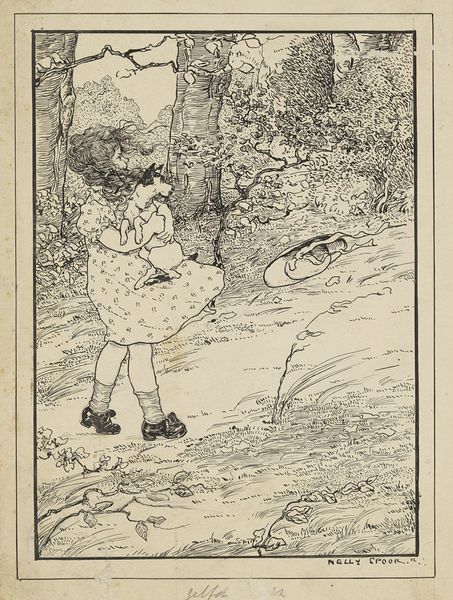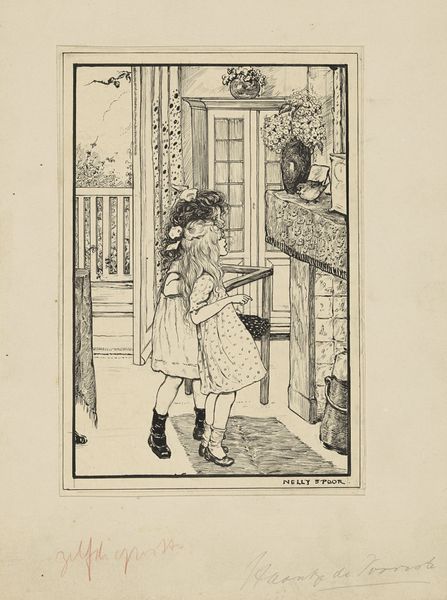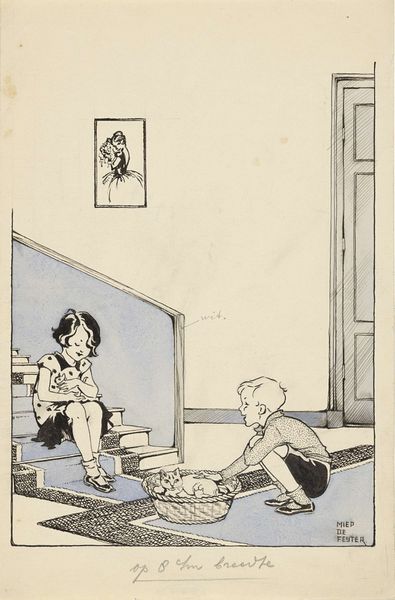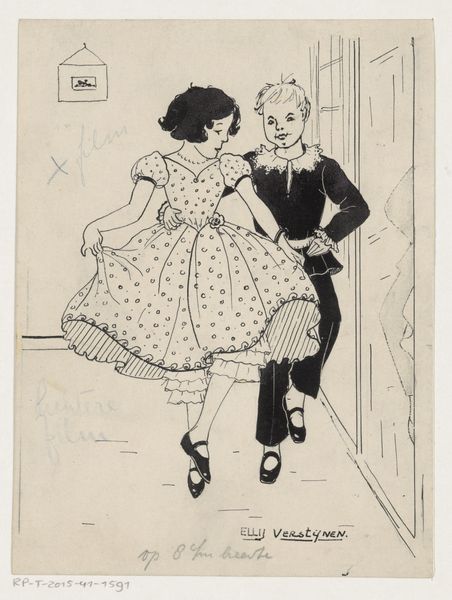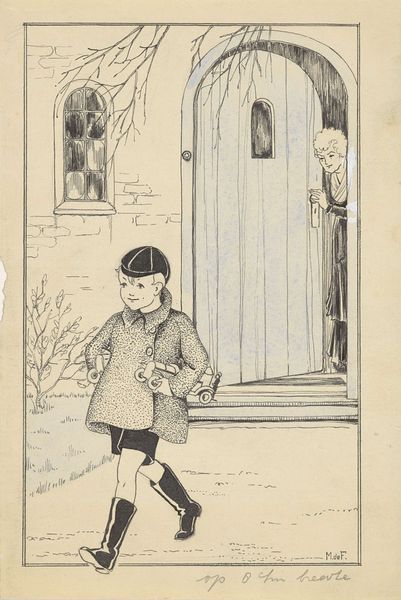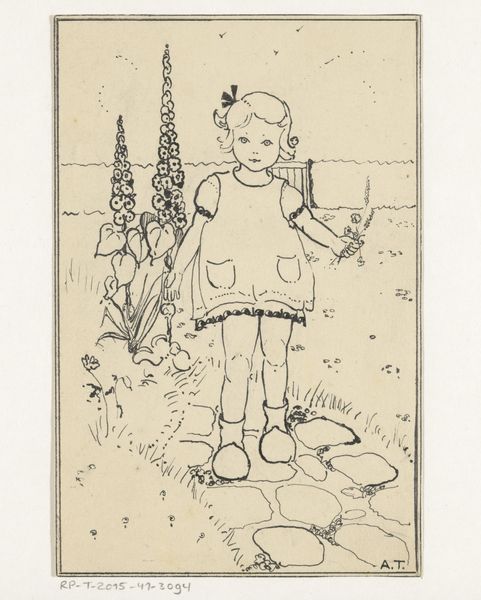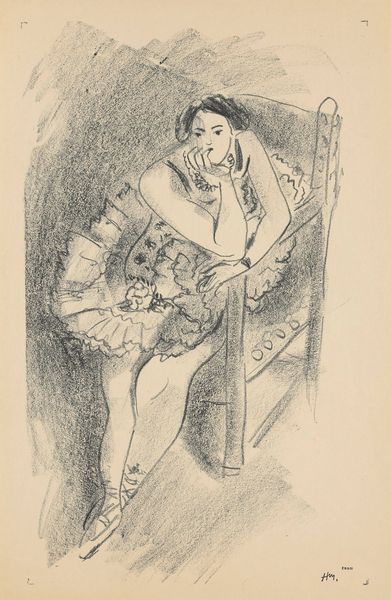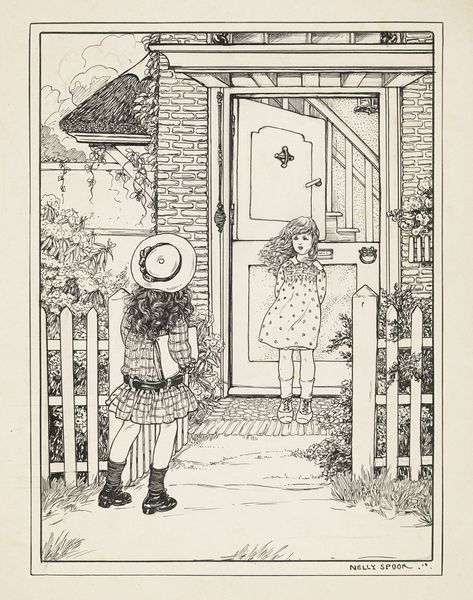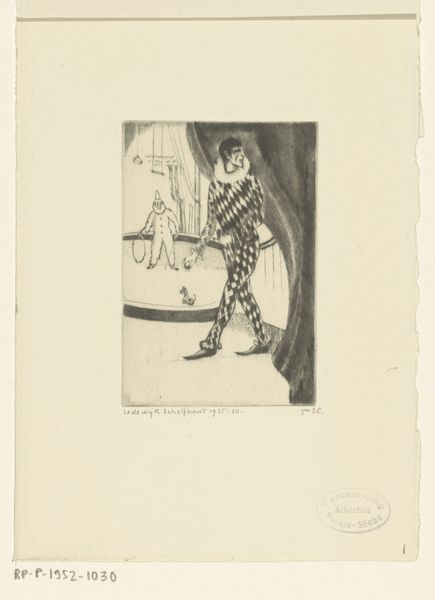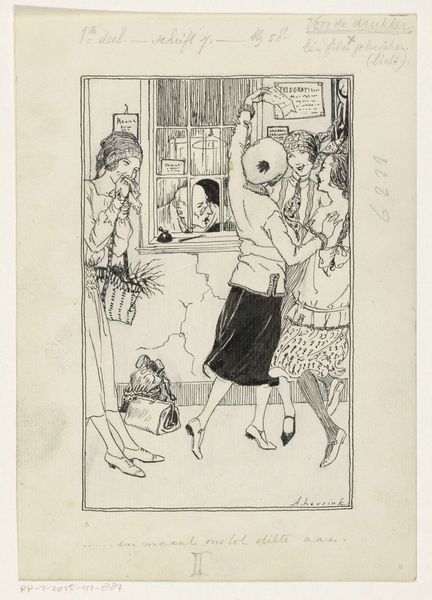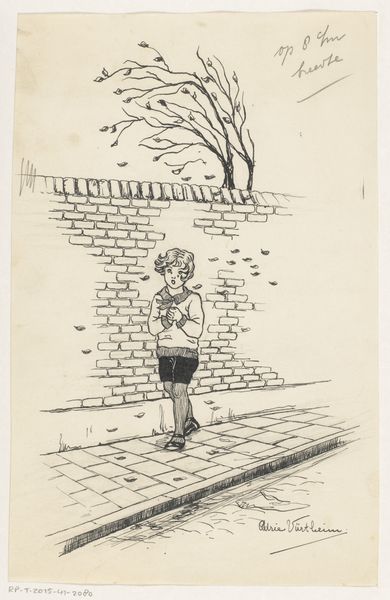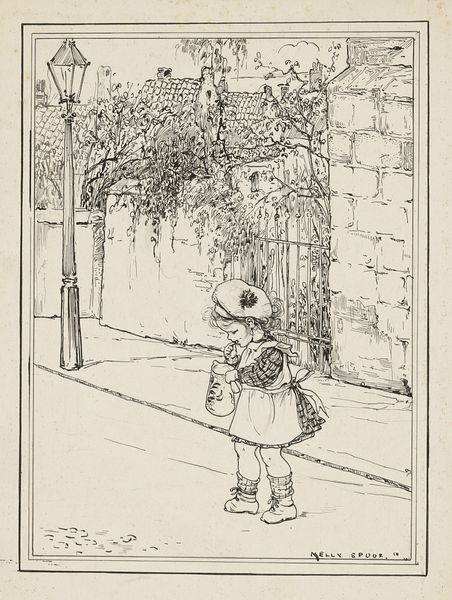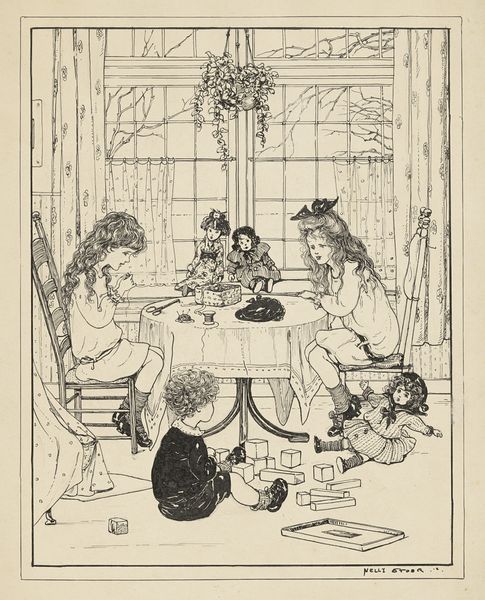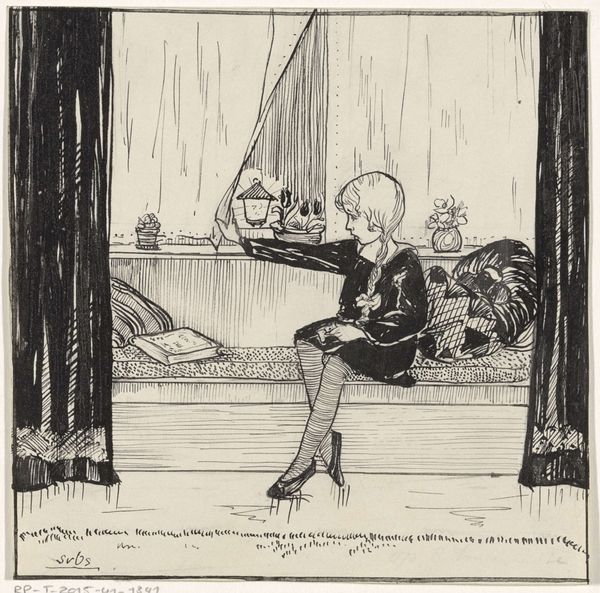
drawing, paper, ink, pen
portrait
drawing
comic strip sketch
quirky sketch
figuration
paper
personal sketchbook
ink
idea generation sketch
sketchwork
ink drawing experimentation
pen-ink sketch
sketchbook drawing
pen
genre-painting
storyboard and sketchbook work
sketchbook art
Dimensions: height 250 mm, width 202 mm
Copyright: Rijks Museum: Open Domain
Curator: What a charming image. We’re looking at “Girl with doll on a garden path” by Miep de Feijter, created around 1930. It's a pen and ink drawing on paper. What are your initial thoughts? Editor: It feels very intimate, almost like a glimpse into a private moment. The simple line work creates a sense of gentle nostalgia, though there's also something a bit melancholic about it. Curator: Yes, the artist's choice of medium contributes to that feeling. Ink drawings, particularly from this era, often evoke a sense of memory and history. Notice the architectural elements in the background—the doorway and that almost fortress-like barred window. These might signify something about the socio-political climate of the time, hinting at themes of security and confinement. Editor: I find the relationship between the girl and her doll especially interesting. It’s a fairly common trope in art, but here the doll, held so tightly, feels less like a plaything and more like a confidante, perhaps a stand-in for someone absent. The contrast between the girl's bright dress and the doll's darker appearance could symbolize a broader societal dynamic. Curator: Absolutely. The doll as a symbolic recipient of affection or even projection is a potent image. De Feijter also included hand-written text next to the artwork, perhaps offering more context to the depicted moment and deepening its symbolism, wouldn't you agree? Editor: Indeed. What fascinates me is the lack of idealization. This isn't a portrait of privileged innocence, but rather a raw and slightly awkward portrayal of childhood. It makes the viewer consider the public image of childhood versus its lived reality, particularly in that period of interwar uncertainty. Curator: A keen observation! I would add that her style and theme choices demonstrate a keen interest in a genre, allowing De Feijter to subtly participate in broader discussions on family, identity, and the individual's place within society at the time. It gives a small peek into Dutch middle-class society. Editor: So, in the end, this little drawing becomes a portal. Curator: Precisely, a poignant reminder that art, even in its most unassuming form, reflects and shapes our understanding of the world.
Comments
No comments
Be the first to comment and join the conversation on the ultimate creative platform.
